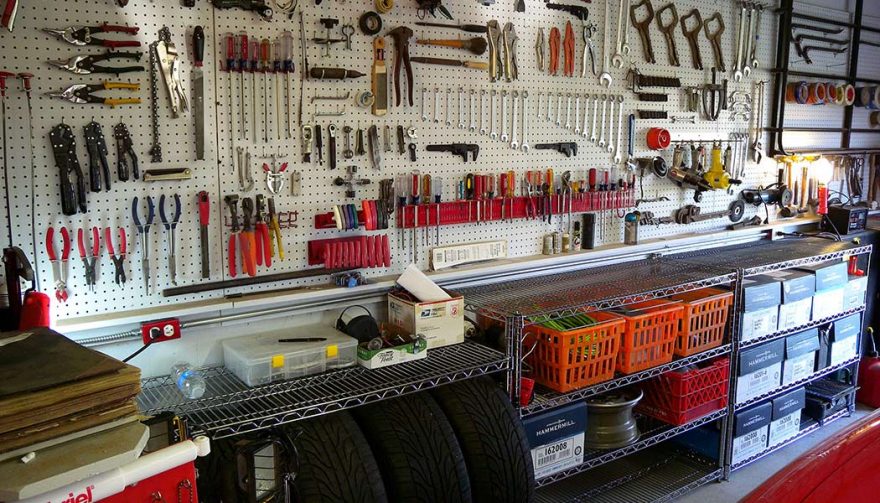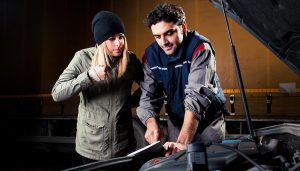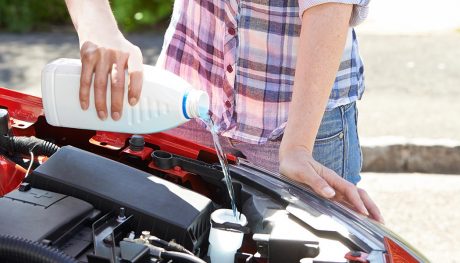
A well-stocked garage is a necessity for a proper resto-mod.
Tackling a Resto-Mod? These Are Must-Have Tools
You’ve convinced your significant other that it’s a good winter project to restore or modify that car you’ve always wanted. That’s a pretty awesome first step, but beware – it’s a thousand-mile journey. There are a million steps between now and your finished resto-mod.
And now that you finally have your project car, what the heck do you do next? You may feel completely lost and overwhelmed when you look at the overall task ahead of you. But don’t worry, we’re here to help you through to completion.
It All Starts with the Right Tools
The next step is one that starts BEFORE you begin working on your car. Unlike many of the tasks you’re going to perform, this one is probably going to be lifelong: you’re going to start collecting tools.
If you think you’re going to get a high-quality build without one of these key tools, think again. You’re in for a world of hurt, a car that takes longer than necessary, and one that could’ve turned out better if you decide to forego these basics. But we aren’t talking basics like a socket set and a Phillips screwdriver. We’re talking minimum requirements for a project of this magnitude.
Air compressor
Your little tire inflator air compressor won’t cut it. You’ll need something with some oomph. See, the work you’ll be using it for would demand a helluva lot of elbow grease otherwise, and you can literally save hours by using a compressor.
If you don’t already have an air compressor, pick one that could be used on a commercial project. A compressor that roofing experts would use is perfect. A pancake-style compressor is compact and highly portable, quiet enough to run in the garage without earplugs, and recharges quickly. Another great option is a 4-gallon compressor on wheels.
Whatever you choose, you’ll find many, many uses for it throughout your project. It’ll work for sanding, grinding, painting, buffing, cutting and fastening tools. And yes, you’ll need to pick up a handful of these tools as well. An impact gun, an air ratchet and a die grinder are good first steps.
Stubby wrenches
You’re certifiably insane if you’ve bought a project car and don’t already have a good selection of standard and metric wrenches. But one thing your busted knuckles will truly thank you for is a set of stubby wrenches.
They are usually a smaller set of wrenches (in number as well as size), but you want a few of the common metric and standard sizes: 10mm, 12mm, ½-inch, 7/16-inch, 5/8ths, etc. You’ll save skinning your fingers and muttering swear words with these wrenches. They fit in the tight spots where nothing else works. You know the ones. The single bolt that takes you 90 minutes to remove.
MIG welder
If you feel like this is above your pay grade, you might be in over your head. You’re going to be modifying and fabricating parts, brackets, bolts, studs and much more. Things you haven’t even considered will need to be welded. And if you’re serious about doing as much of your project by yourself as possible, you may even be welding up body. Rust repairs aren’t that difficult on many cars with all the rust repair panels available aftermarket. Even fabbing your own sheet metal may be in your future…
You can find MIG welders at your local hardware and tool stores. If you only have access to 110-volt outlets, a compact 110v welder will have to do. If you are able to procure a 220v welder, it will be more powerful and versatile for your needs and will be a tool that stays in your garage for years to come.
Paint Sprayer
To go with your air compressor, a paint sprayer is a must-have. No, you probably shouldn’t be applying the finish coat on your own car. However, you could definitely handle some of the smaller bits and the hidden parts.
When you get down to stripping the car to a shell, you’re going to find rusty control arms and subframes. Your axles will have peeling paint, and your engine block will be corroded. If you send all these things to a professional painter, you’d better have extremely deep pockets. Alternatively, you can pick up an affordable sprayer and do it yourself. A HVLP (high volume, low pressure) paint system for your compressor is a couple hundred dollars online.
It’s going to take a bit of practice to get your spraying down-pat, but most of the parts you paint will be underneath your car.
Bench grinder
The dual-wheel bench grinder is going to be your best friend day after day. All those parts that have to be painted? You’re going to be stripping them clean first. The fastest and least expensive way is a bench grinder with wire wheels.
You might already have one in your garage. If you don’t, spend a little extra for one with a light on it. It sounds sissy but your eyes will get tired. Buy several wire wheels, because you’re going to need a few replacements during the course of your build. And don’t forget to wear eye protection every time.
Hammers
You need hammers. A lot of them. You can never find one when you need one, even though you know you have a bunch. You’ll need a dead-blow hammer for heavy hitting, a ball-pein hammer for shaping and fitment, and a sledge hammer. The sledge is required when you need to get your frustration out when something isn’t going your way. And occasionally for persuasion.
These are just a few of your must-haves. Don’t kid yourself about how expensive this resto-mod is going to be, and not just for the parts and labor bills you’ll be footing. There are so many tools you’re going to need that you don’t already have. An even better idea: make friends with a professional technician. Then borrow their tools.





